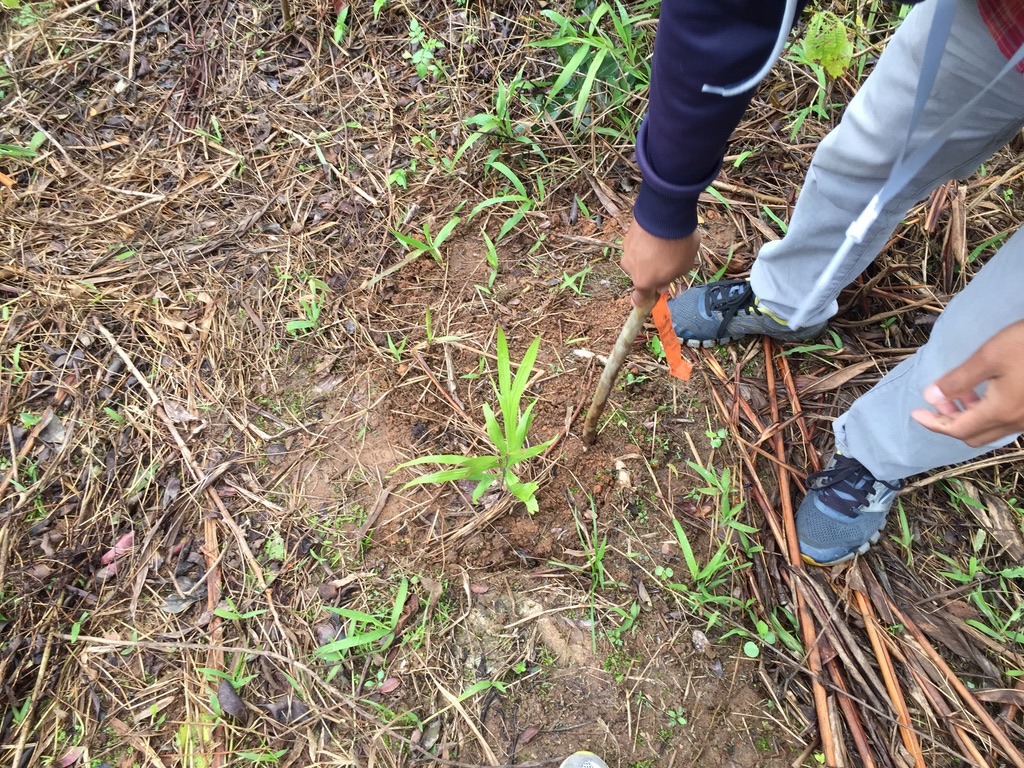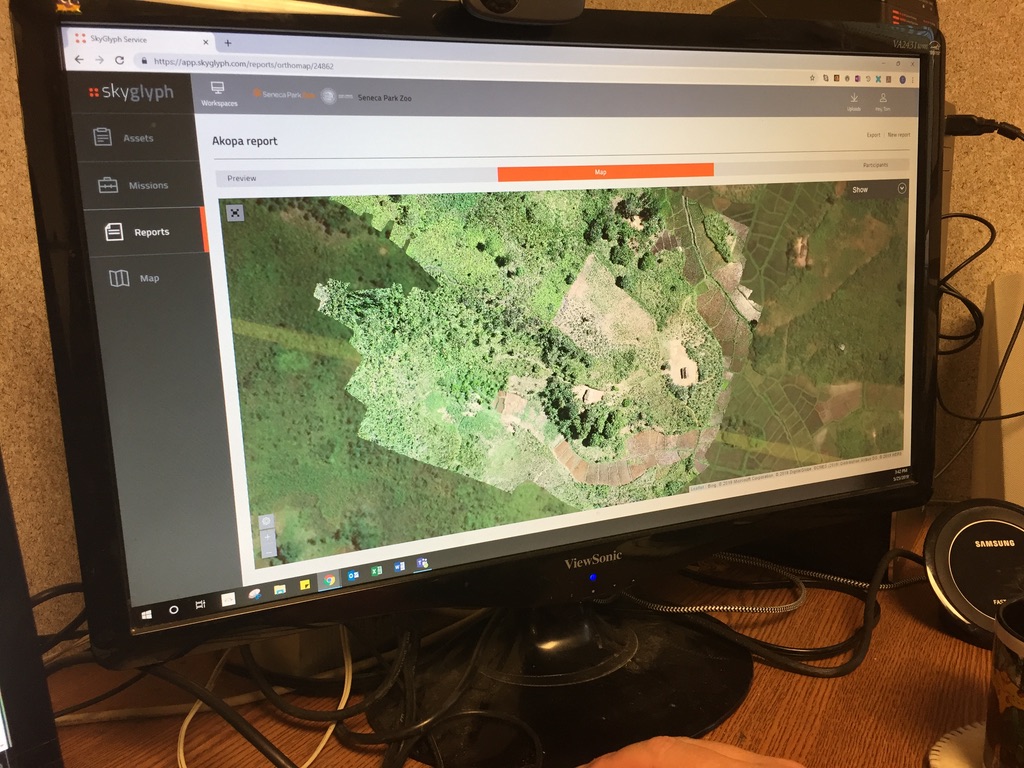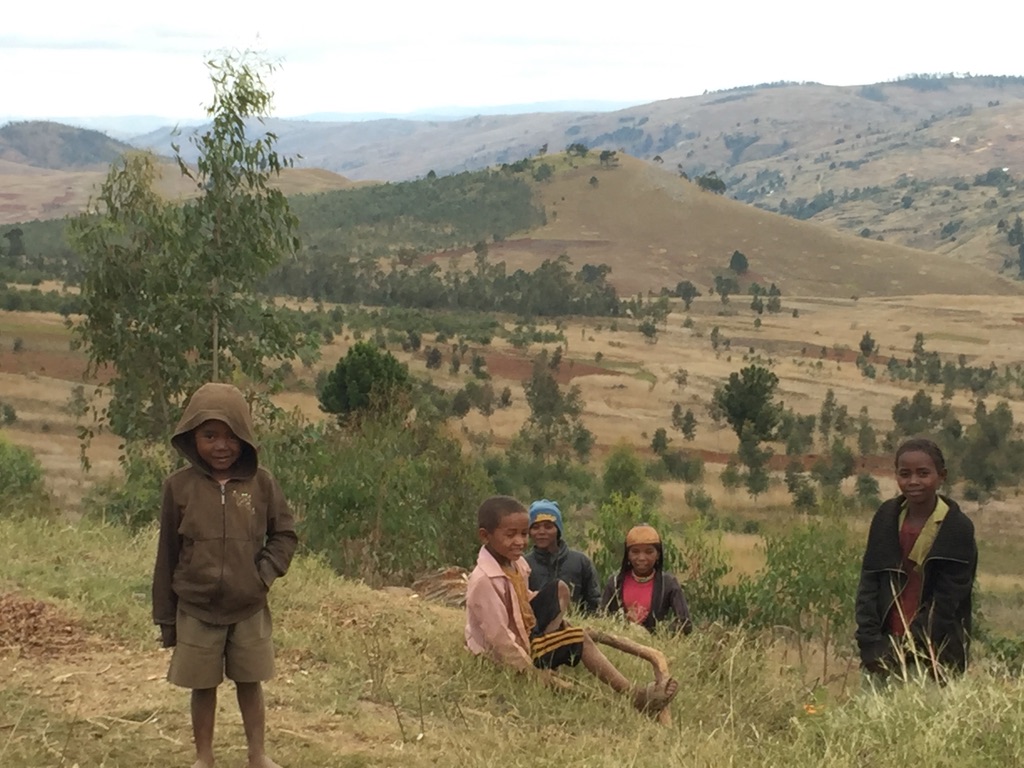- Governments and organizations around the world have carried out massive tree-planting initiatives, but to date there’s been no reliable way to track how effective these programs have been.
- Now, some groups are embracing cutting-edge technology solutions such as QR codes, drone surveillance and blockchain to keep tabs on every tree planted.
- But they also recognize the importance of bringing local communities on board to improve the effectiveness of these efforts, and the need for old-fashioned field surveys to complement the high-tech monitoring methods.
ROCHESTER, New York and RANOMAFANA NATIONAL PARK, Madagascar — Tom Snyder wants to change the way people see trees. Specifically, he wants to help donors to Seneca Park Zoo in New York, where he works, “see” the trees that their donations help plant, even if they are thousands of miles away.
To do this, the trees must not only be rooted in the earth but live in the cloud. In January, the zoo will plant 3,000 trees around Ranomafana National Park in southeastern Madagascar. Each one will come with its own QR code, photographic record, and geolocation tag. It is an effort to make visible the impact that charitable donations to the zoo have, in the hope that transparency will encourage giving, and ultimately improve tree survival rates.
“Currently, we take money for the tree, we put it in the ground, and we say we have done our part,” said Snyder, Seneca Park Zoo’s director of programming and conservation action. “That is not enough for us.” Last year, the zoo funded the planting of around 12,000 trees in and around Ranomafana National Park, but it had no way to track which of them survived.
The problem of how to measure the outcomes of conservation projects is not unique to zoos or tree planting; the outcomes are notoriously hard to pin down. Doing so involves researchers out in the field with notebooks and pens, populating spreadsheets and spawning endless email chains. In a world where every step we take, every web search we make can be traced, it would appear that conservation efforts are overdue for a tech upgrade.
Snyder and his team believe they have hit upon the right constellation of technologies to track trees. It entails creating a unique digital signature for every tree and an immutable record of its existence. If the initiative succeeds, it could find uses outside fundraising. This year, Madagascar embarked on a campaign to reforest at least 40,000 hectares (99,000 acres) every year for at least five years, which means planting more than 40 million trees a year.
A gift of trees that keeps giving

Instead of stuffing bills into a donation box this holiday season, Seneca Park Zoo (SPZ) patrons will be able to purchase a voucher, $10 for a tree. The voucher code will give them access to a website where they can track the tree’s progress with Amazon-like doggedness: when it enters the nursery as a seed, when it is transplanted to a reforestation site as a sapling, and whether it is still alive and well in the ground.
The donor website is hosted on Salesforce, a customer relationship management platform. An app that is under development will be used by field managers to scan the QR code, take a photograph, and log the geolocation of each tree. This field data will be stored on a cloud-based database called PostGIS, from where it can be pulled up on the donor website.
By clicking the “verify” button on their website, donors will be able to check if their trees are still standing. This will raise a request for the most recent photo of the tree to appear on-screen. That request is handled securely by a third-party application developed by IXO Foundation, a Switzerland-based nonprofit that is harnessing blockchain technology to capture the impacts of sustainability initiatives. Blockchain, the technology that undergirds cryptocurrencies such as Bitcoin, relies on a digitized public ledger where chunks of data are linked to each other in a way that protects them from manipulation. Copies of the ledger are stored on several different computers, so no single party can tamper with it.
The technology safeguards the data, but field personnel would still have to physically check on the saplings, for now anyway. Drones are being tested as part of the SPZ project to surveil reforested areas and could prove more efficient than people traversing muddy paths that crisscross the hilly terrain surrounding Ranomafana National Park. Humans will scan the resulting aerial imagery for individual trees. There are plans to introduce tree-recognition AI into the process.
Drones like the ones SPZ is testing, though more accurate than satellites, are more expensive for monitoring purposes because they have to be flown on specific trajectories over smaller swaths of land. However, at their much lower altitude, the view is clearer than from satellites.

Remote sensing is advancing quickly, but the importance of ground-truthing cannot be overstated. The estimate for the number of trees on the planet was revised by an order of magnitude from 400 billion to about 3 trillion in 2015, largely because a team led by Tom Crowther at the Swiss Federal Institute of Technology in Zurich went beyond satellite imagery to incorporate ground-sourced measurements of tree density in forests.
Tracking a trillion trees, one planting project at a time
SPZ may be the first tree-planting group attempting to track individual trees, but it isn’t the only one trying to better monitor the success of planting projects as a whole. To tackle climate change, some scientists like Crowther have put their faith in planting trees — one trillion of them. The U.N.’s first global tree-planting campaign, launched in 2006, grew into the Trillion Tree Campaign. In 2011, Plant-for-the-Planet, the Munich-based foundation where Crowther is a scientific adviser, took charge of the campaign, tracking and supporting progress toward the trillion-trees goal.
Until a few years ago, the foundation distributed funds to organizations that did the planting. “Our donors started asking us questions, asking if they could see where the trees are planted,” Sagar Aryal, chief technical officer at the Plant-for-the-Planet Foundation, told Mongabay. “We really didn’t know where the trees were planted.”
So they pivoted toward a different, more transparent model. The organizations now register their tree-planting projects on Plant-for-the-Planet’s web-based platform. It’s like an online marketplace for trees where donors big and small can, with a few clicks, help plant trees anywhere in the world, from Bangladesh to Germany, with the cost per tree ranging from 10 cents to $55. Plant-for-the-Planet also launched a mobile app last year.
One familiar problem has persisted: how to keep tabs on the trees’ fate. Registered organizations self-report survival rates. “There are cases when people planted thousands of trees and none of them survived,” Aryal said. He estimates that the average survival rate is about 40 percent. The foundation wants it to be closer to 80 percent, and verifiable.
In the coming months, foundation staff will revamp the app to include more information on the reforestation sites. It will not map individual trees but polygonal plots of land where projects are underway, using satellites. The app will also display data showing carbon sequestration potential. A review system is also under development where visiting scientists and forest managers can assess each project on various indicators of forest health, a kind of Yelp for reforestation sites. Aryal said the foundation does not have the resources to do this in-house and is looking to outsource the on-the-ground review work to other NGOs.
The limits of technology
SPZ also forecasts relying heavily on organizations that already have a presence in communities near their planting sites; to get villagers on board as well as manage financial transactions and, more importantly, expectations. In Ranomafana, SPZ works with Stony Brook University, which runs the Centre ValBio (CVB) research station in Madagascar, on a variety of programs including reforestation. The station serves as an incubator for technologies, a veritable island just outside the park with its own power and internet connection, both of which are missing from the rest of its rural neighborhood and most of Madagascar.
Last year, SPZ funded a staff position at CVB to support the zoo’s tree-planting initiative. When Mahandry Hugues Andrianarisoa, 28, took up the role in 2018, he struggled to evaluate the history and success rate of CVB’s own reforestation program. Fifteen years’ worth of data on tree planting from 2001 to 2015 lay in spreadsheets that were confusing, inconsistent and often incomplete. In the last few years, data collection has improved, but the process remains rudimentary and painstaking, akin to having a WhatsApp chat over snail mail.

The plastic tags that CVB currently marks trees with are vulnerable to the elements of nature and bereft of useful data. Finding a tree planted more than a decade ago can sometimes mean chasing down technicians or villagers who were around at the time of the planting. The SPZ project aims to replace these tags with laser-engraved QR codes on aluminum tags, photos, and a geolocation.
The geolocation and QR codes will effectively lock down the location of the tree for future reference. But Andrianarisoa believes that the photos will make a huge difference, giving a tangible form to an abstract act of goodwill. The data will be transferred directly from the app the field technicians use for collecting the data to SPZ’s online platform.
The program is rooted in the belief that trees die in darkness. But the destinies of trees are also bound to the land on which they stand and the people who own it. At their model tree-planting site in the Yucatán Peninsula in Mexico, the Plant-for-the-Planet Foundation has bought 22,500 hectares (55,600 acres) of land. People can donate 1 euro ($1.10) to plant a tree there. The foundation employs more than 100 people to plant and guard the trees and boasts of a one-year survival rate of more than 90 percent, in what are arguably ideal conditions.

Conditions in Madagascar, however, are far from ideal. Most of the reforestation in Madagascar is done on public lands, where survival rates are poor. The SPZ project is targeting small landowners instead, wooing them with hard cash. A fraction of the $10 tree voucher ($2.25) will go toward this payment. For each hectare of land, a parcel the size of 20 basketball courts, where 1,600 trees will be planted, landowners will receive $150 as rent every year, and another $150 for materials and for taking care of the trees. The arrangement is expected to last 10 years.
Across Madagascar, forests are cleared for rice cultivation, some of which is consumed and the rest sold. The money could potentially make planting trees more attractive than growing rice. “We are trying to create an environment that promotes the ownership of forests,” Snyder said. “When communities see forests as a sustainable source of income, then public perception of forests will change.”
REDD+ schemes, which basically compensate people for carbon sequestered by trees on their land, have run into difficulties in places like Madagascar where land rights are tenuous. The weak law-and-order situation in the country — it ranked 107th among 126 countries on the 2019 World Justice Project Rule of Law Index — means individual landowners may find it difficult to secure their plots. A $300 incentive could fuel friction in communities where a majority of people live on less than $1 a day.
Innovating for relevance?
For the embattled zoo industry, which most people associate with the business of displaying exotic animals rather than with conservation, trying to develop a tree-tracking tool useful for the wider conservation community makes sense.
SPZ channels about $77,000 in guest donations every year to conservation efforts worldwide, from Asia to Africa, South and Central America all the way to the Arctic. The Association of Zoos and Aquariums, of which Seneca Park Zoo is a member, has pumped $7 million into 390 projects since 1991 through its Conservation Grants Fund. “For me, this is the power of the zoo; we connect people to the worldwide biodiversity,” Snyder said. “In doing so, people fall in love with things like snow leopards and lemurs.”
The zoo hopes these connections might convert into donations faster if people knew exactly where their money was going. To succeed, not only does the technology need to hold up, but there also has to be buy-in from NGOs and from Malagasy villagers. The proof of concept will come from a limited rollout on 50 hectares (124 acres) next year.

It is modest compared to Madagascar’s ambitious 40,000-hectare reforestation target. The country is part of the Bonn Challenge that aims to restore 350 million hectares (865 million acres) of degraded land by 2030 and the African Forest Landscape Restoration Initiative (AFR100) to restore 100 million hectares (247 million acres) of land in Africa by 2030. Earlier this year, Ethiopia, also a member of AFR100, claimed to have planted 350 million trees in 12 hours as part of a nationwide campaign. In January 19 next year, Madagascar plans to plant 60 million trees to mark its 60th year of independence, with an eye toward breaking the record for any country in the Indian Ocean.
As yet, it is unclear if and how the Malagasy government will monitor survival rates. “I have a big problem with countries that say we planted millions of trees, but if you go back to see, 80 percent of the trees will be dead,” Snyder said. “There is a higher likelihood of our trees being around in 10 years.”
Time, satellites and data will tell.
Editor’s note: Mongabay founder and CEO Rhett Butler is a member of Centre ValBio’s advisory board. The article has been updated to clarify that Madagascar will be hosting a large-scale planting drive on January 19, 2020 to mark 60 years of independence, not on its independence day in June.)
Banner Image: Baobab trees in western Madagascar captured by a drone. Image by Rhett A. Butler/Mongabay
Malavika Vyawahare is the Madagascar staff writer for Mongabay. Find her on Twitter: @MalavikaVy
FEEDBACK: Use this form to send a message to the author of this post. If you want to post a public comment, you can do that at the bottom of the page.
